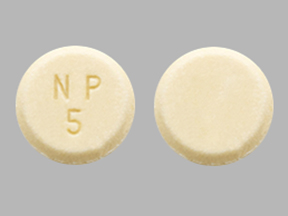Rayos Dosage
Generic name: PREDNISONE 1mg
Dosage form: tablet, delayed release
Drug class: Glucocorticoids
Medically reviewed by Drugs.com. Last updated on Jun 11, 2024.
Recommended Dosing
Dosage of RAYOS should be individualized according to the severity of the disease and the response of the patient. For pediatric patients, the recommended dosage should be governed by the same considerations rather than strict adherence to the ratio indicated by age or body weight.
The maximal activity of the adrenal cortex is between 2 am and 8 am and is minimal between 4 pm and midnight. Exogenous corticosteroids suppress adrenocorticoid activity the least when given at the time of maximal activity. RAYOS is a delayed-release formulation of prednisone which releases the active substance beginning approximately 4 hours after intake. The timing of RAYOS administration should take into account the delayed-release pharmacokinetics and the disease or condition being treated.
The initial dosage of RAYOS may vary from 5 to 60 mg per day depending on the specific disease entity being treated. Patients currently on immediate release prednisone, prednisolone, or methylprednisolone should be switched to RAYOS at an equivalent dose based on relative potency (2.4).
In situations of less severity, lower doses will generally suffice while in selected patients higher initial doses may be required. The initial dosage should be maintained or adjusted until a satisfactory response is noted. If after a reasonable period there is a lack of satisfactory clinical response, RAYOS should be discontinued and the patient transferred to other appropriate therapy. It should be emphasized that dosage requirements are variable and must be individualized on the basis of the disease under treatment and the response of the patient.
After a favorable response is noted, the proper maintenance dosage should be determined by decreasing the initial drug dosage in small decrements at appropriate time intervals until the lowest dosage which will maintain an adequate clinical response is reached. It should be kept in mind that constant monitoring is needed in regard to drug dosage. Included in the situations which may make dosage adjustments necessary are changes in clinical status secondary to remissions or exacerbations in the disease process, the patient's individual drug responsiveness, and the effect of patient exposure to stressful situations not directly related to the disease entity under treatment. In this latter situation it may be necessary to increase the dosage of RAYOS for a period of time consistent with the patient's condition. If a period of spontaneous remission occurs in a chronic condition, treatment should be discontinued. If after long-term therapy the drug is to be stopped, it is recommended that it be withdrawn gradually rather than abruptly.
Recommended Monitoring
Blood pressure, body weight, routine laboratory studies (including 2-hour postprandial blood glucose and serum potassium), and chest X-ray should be obtained at regular intervals during prolonged therapy with RAYOS. Upper GI X-rays are desirable in patients with known or suspected peptic ulcer disease.
Method of Administration
RAYOS is for oral administration.
RAYOS should be taken daily with food.
RAYOS tablets should not be broken, divided, or chewed because the delayed release of prednisone is dependent on an intact coating.
Corticosteroid Comparison Chart
For the purpose of comparison, one 5 mg RAYOS tablet is the equivalent milligram dosage of the following various corticosteroids:
| Betamethasone, 0.75 mg | Paramethasone, 2 mg |
| Cortisone, 25 mg | Prednisolone, 5 mg |
| Dexamethasone, 0.75 mg | Prednisone, 5 mg |
| Hydrocortisone, 20 mg | Triamcinolone, 4 mg |
| Methylprednisolone, 4 mg |
These dose relationships apply only to oral or intravenous administration of these compounds. When these substances or their derivatives are injected intramuscularly or into joint spaces, their relative properties may be greatly altered.
Frequently asked questions
- What is considered a high dose of prednisone?
- What's a good prednisone taper schedule?
- How long can you take prednisone safely?
- Is it OK to drink alcohol with Prednisone?
- Prednisone: What are 12 Things You Should Know?
- How long does it take for prednisone to work?
- Do I take all 6 prednisone pills at once on the first day?
- How long does prednisone stay in your system?
- Why does prednisone cause weight gain?
More about Rayos (prednisone)
- Check interactions
- Compare alternatives
- Pricing & coupons
- Reviews (3)
- Drug images
- Side effects
- During pregnancy
- FDA approval history
- Drug class: glucocorticoids
- Breastfeeding
- En español
Patient resources
Other brands
Deltasone, Sterapred, Prednicot, Sterapred DS
Professional resources
Other brands
Related treatment guides
See also:
Further information
Always consult your healthcare provider to ensure the information displayed on this page applies to your personal circumstances.


